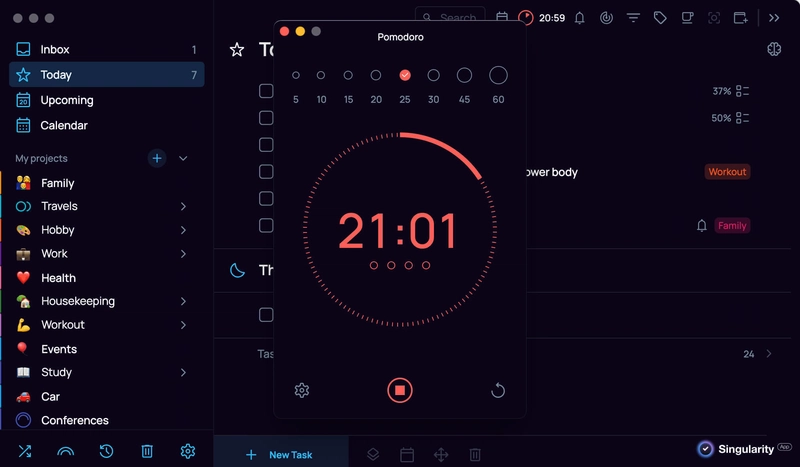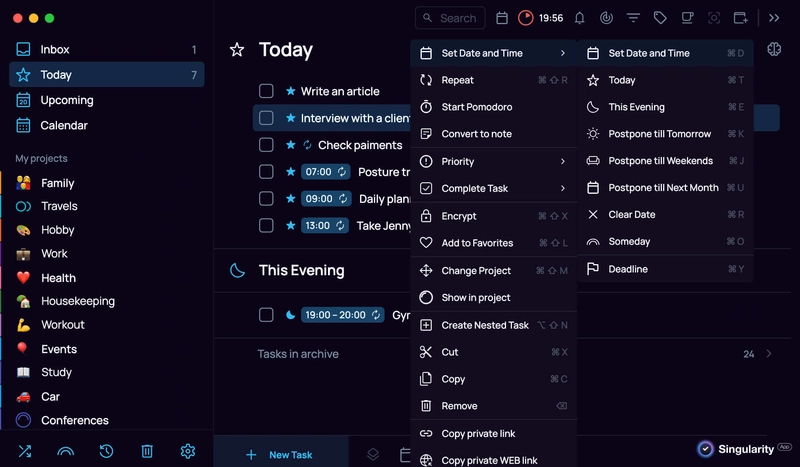Anything that can go wrong will go wrong. The term was born when an experiment by American aerospace engineer Edward Aloysius Murphy Jr. failed. He wanted to measure how many Gs people would experience in a newly designed airplane. To find out, a special sled with a rocket engine was fired up and abruptly stopped. Unfortunately, the sensors did not show its true G force as the technicians had installed them wrong.
So there you go. There’s no use in planning because plans tend to go awry.
Murphy slapped everyone:
Eisenhower with his matrix — idea about important non-urgent tasks. Eisenhower says they help eliminate the causes of possible troubles. Murphy says that if 4 causes of a possible trouble are eliminated, there will appear a fifth one. There’s a bell sound.
Parkinson with his law. According to Parkinson, work takes all the time allotted to it. According to Murphy, work always takes more time than you think. Parkinson is in knockout.
Ivy Lee with his method. According to Ivy Lee, every morning you should start with the most important task from the list of six ones, and move to the next task only when the previous one is completed. According to Murphy, as soon as you get down to a task, there always appear another one that has to be done even before this one. Smack Ivy Lee upside his head.
According to Murphy’s laws, any of our actions only makes things worse, since «every solution creates new problems.» That’s all. Time management is on the ground. And every action we take only makes things worse, because «every decision creates new problems.» So that’s it. Time management is pointless.
Really though?
Even Captain Edward Aloysius Murphy Jr. thinks this is untrue. However, he viewed his «law» not as a joke but as a crucial engineering design principle: any system must eliminate the possibility of human error, which is an inescapable constant.
How Murphy’s Law can help with life and planning
Murphy’s Law is not really an expression of pessimism but all about foresight and careful preparation. Murphy’s Law helps you make plans that work.
Why did the experiment with the bungled sensors fail?
- No one checked whether the sensors were installed correctly.
- The possibility of installing the sensors incorrectly was not excluded: they were not labeled and came with no instructions.
Think things through: remember that anything that can go wrong will go wrong, and adhere to the following principles:
Anticipate problems. Analyze possible points of failure before they occur. For example, if you’re organizing an outdoor event, have a backup plan in case of rain.
Dual reliability. Create redundant systems for important elements. In aviation, for example, important systems are all duplicated to prevent disaster if one of them fails.
Test. Test systems in real-world conditions before launch. Before an important presentation, do a rehearsal with colleagues to identify possible problems in advance.
Simplify. The simpler the system, the fewer weaknesses it has. The principle of minimalism is often applied to user interface design to avoid confusion and reduce the risk of misuse.
Foolproofing. Create processes where error is impossible or obvious. For example, in most modern cars, pouring diesel fuel into a gasoline tank is difficult due to different neck sizes.
Buffer time. Allow an extra 25-50% of the time for any project. If it takes 40 minutes to drive to the airport, it’s wise to budget 60 minutes to avoid getting stuck in traffic.
Plan B. Always have backups and fallback routes if something goes wrong. If an important document can’t be printed in a certain office in time, it’s a good idea to find out in advance where else the copies can be made.
Applying Murphy’s Law in the way intended is the key to success.
Murphy’s Law helps IT engineers when creating security and fault-tolerant systems. They live by the principle «what can break, will break.» Risk specialists consider even unlikely scenarios; experienced managers plan for risks by adding buffer time. They know from experience that unforeseen problems always arise.
At the end of this article, we’ll tell you how Singularity.App’s time planner can help you take advantage of Murphy’s Law.
Can you avoid Murphy’s law?
While useful, Murphy’s law does bring dangers. Follow it with a cool head. It is useful as a design and planning principle but it is not a philosophy for life. use it to prepare for difficulties, but don’t let it become an excuse for inaction.
Murphy’s law:
- Can cause excessive anxiety
- Sometimes leads to overreacting
- If misinterpreted, it can breed pessimism.
- Can distract you from possibilities by focusing on terrible dangers.
- Keep in mind that we remember the bad easier than the good so it’s easy to see examples of Murphy’s law all around us.
- Here are just a few of the interpretations of Murphy’s main law.
- Everything is not as easy as it sounds.
- Among all the troubles that one will occur whose damage is greater.
- Matters that are neglected always go from bad to worse.
- It’s usually at the end of the work when we realize what we should have started it with.
- There is never enough time to do everything correctly on the first try, but there is always time to redo it.
- Every decision is made more than one time.
- No matter how carefully you plan what you will do, working time will anyway be spent on something different.
- The work of ten people is done better by eight men than by twelve ones.
Scientists have explained why people are so happy to come up with manifestations of Murphy’s Law in different spheres. We tend to remember difficulties and focus on them more than situations in which everything went according to plan. This is due to cognitive distortions — systematic errors in thinking that affect our perception of reality.
It’s how we’re wired — our ancestors only survived if they remembered which bush a tiger once crouched behind before pouncing and eating their buddy. And so they were always prepared for trouble. And they passed on those genes to us, which compel us to never forget all our troubles.
How Singularity.App helps you take advantage of Murphy’s Law
A task scheduler can help you calculate the exact amount of time you actually need for a task.

Measure the duration of typical tasks with a time tracker to more accurately figure out how many hours or minutes you’ll need the next time around
Its notifications will let you know when it’s time to start preparing.

Put all your important dates in your planner, set up recurring tasks, and set reminders
This article was originally published on the SingularityApp blog





Top comments (0)